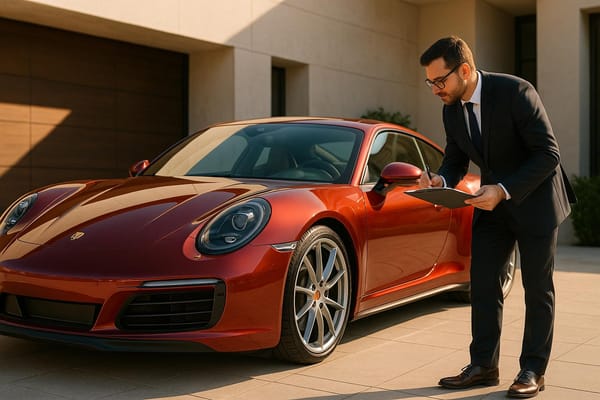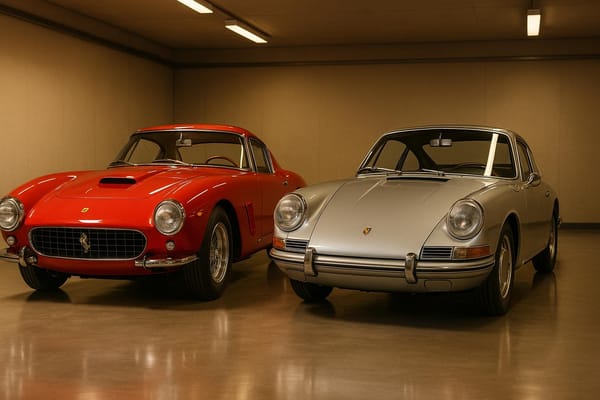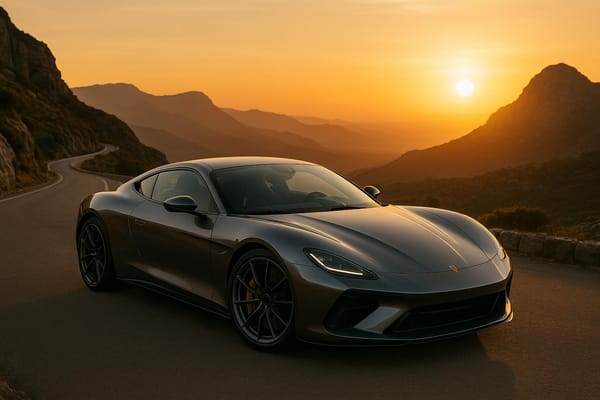7 Most Appreciating Supercars of the Last Decade
Explore supercars that have appreciated in value over the last decade, driven by rarity, performance, and cultural significance.
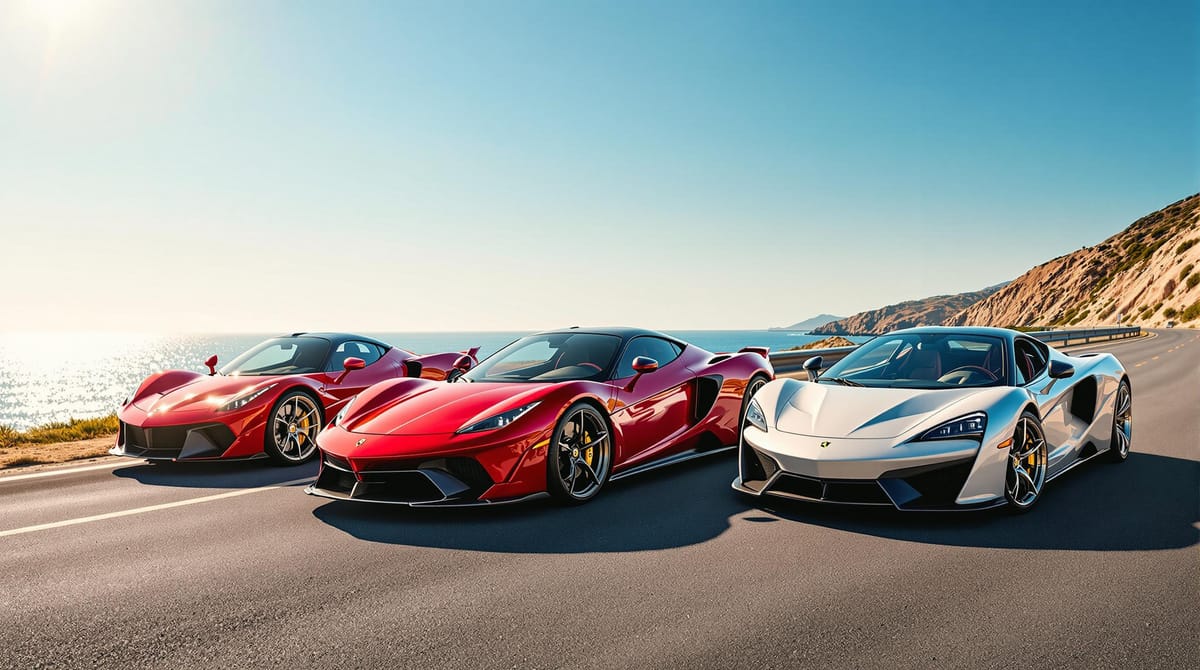
Why?
- Limited Production: Fewer units mean higher demand.
- Advanced Engineering: Cutting-edge technology and hybrid systems drive desirability.
- Pop Culture Influence: Appearances in films and games boost their appeal.
Top 7 Supercars That Gained Value:
- Ferrari LaFerrari – Doubled in value (£1.2M → £2.4M).
- Porsche 918 Spyder – Up by 245% (£870K → £3.0M).
- McLaren P1 – Gained 141% (£805K → £1.94M).
- Lamborghini Aventador SVJ – Up 108% (£370K → £770K).
- Ford GT – Appreciated 266% (£410K → £1.5M).
- Aston Martin Valkyrie – Rare and highly sought after.
- Bugatti Chiron – 25% growth (£2.4M → £3.0M).
These cars combine rarity, performance, and heritage, making them collector favourites. If you're in the UK, owning one involves costs like secure storage (£3,000/year) and insurance (£3,000–£5,000/year). But with proper care and maintenance, they could be a solid investment.
Quick Comparison
| Model | Original Price (£) | Current Value (£) | Growth (%) | Production Run |
|---|---|---|---|---|
| Ferrari LaFerrari | 1.2M | 2.4M | 100% | 499 Coupés, 209 Apertas |
| Porsche 918 Spyder | 870K | 3.0M | 245% | 918 units |
| McLaren P1 | 805K | 1.94M | 141% | 375 units |
| Lamborghini Aventador SVJ | 370K | 770K | 108% | 900 units |
| Ford GT | 410K | 1.5M | 266% | Limited |
| Bugatti Chiron | 2.4M | 3.0M | 25% | 500 units |
| Aston Martin Valkyrie | Data pending | Data pending | N/A | 150 units |
These supercars aren’t just vehicles - they’re investments with potential for long-term value growth.
Buying Supercars as Investments? | FUEL FOR THOUGHT
What Makes Supercars Gain Value
Limited Production Numbers
Supercars with limited production often see their value soar. For example, the Maserati MC12, with only 50 units made, has more than doubled in auction value since its debut. Similarly, the Lexus LFA, limited to 500 examples, has seen its market price nearly double due to its rarity and impressive performance.
Technical Advancements and Performance
Cutting-edge technology and exceptional performance often make a supercar more desirable over time. Additionally, appearances in pop culture can significantly increase demand.
End-of-Production Models
Cars that mark the end of a production era - like the final V12 models or groundbreaking hybrids - frequently experience a surge in value.
Manufacturer Support and Warranties
Strong backing from manufacturers can also help maintain high resale values. For instance, Ferrari's two-year warranty on the LaFerrari has helped keep its resale price above £3 million.
UK Value Growth Examples
| Model | Original Price (£) | Current Market Value (£) | Production Run |
|---|---|---|---|
| Porsche 911R | 170,000 | 425,000–450,000 | 991 units |
| McLaren 675LT Spider | 300,000 | 375,000–400,000 | 500 units |
| Aston Martin V12 Zagato | 396,000 | c. 500,000 | 150 units |
"With more financial turmoil anticipated ahead, what better place than something you are passionate about and something you can enjoy?" - Tom Jaconelli, Supercar Driver magazine
For many collectors, high-end supercars are seen as investments that not only hold their value but can also grow over time. These factors set the stage for the seven models discussed next.
1. Ferrari LaFerrari (2013-2016)

The LaFerrari originally sold for around £1.2 million but now commands prices exceeding £2.4 million.
Production and Exclusivity
Ferrari produced just 499 coupés and 209 Aperta models, making it one of the most exclusive cars in the world.
Performance and Technology
Equipped with a 6.3-litre V12 engine paired with a 120 kW electric motor, the LaFerrari delivers an incredible 950 hp and 900 Nm of torque. This power comes from its F1-inspired HY-KERS hybrid system.
Market Value and Investment Potential
In just five years, thirteen recorded sales of the LaFerrari have totalled £36.5 million. One standout sale was a 2017 Aperta, which fetched £4.3 million on 9 May 2022.
"The LaFerrari is a technological tour de force. It's the first hybrid Ferrari, and it's one of the most advanced cars ever built." – Motor Trend
Its limited production, groundbreaking hybrid technology, and status as part of the 'Holy Trinity' of hypercars ensure strong demand and solid returns for collectors.
2. Porsche 918 Spyder (2013–2015)
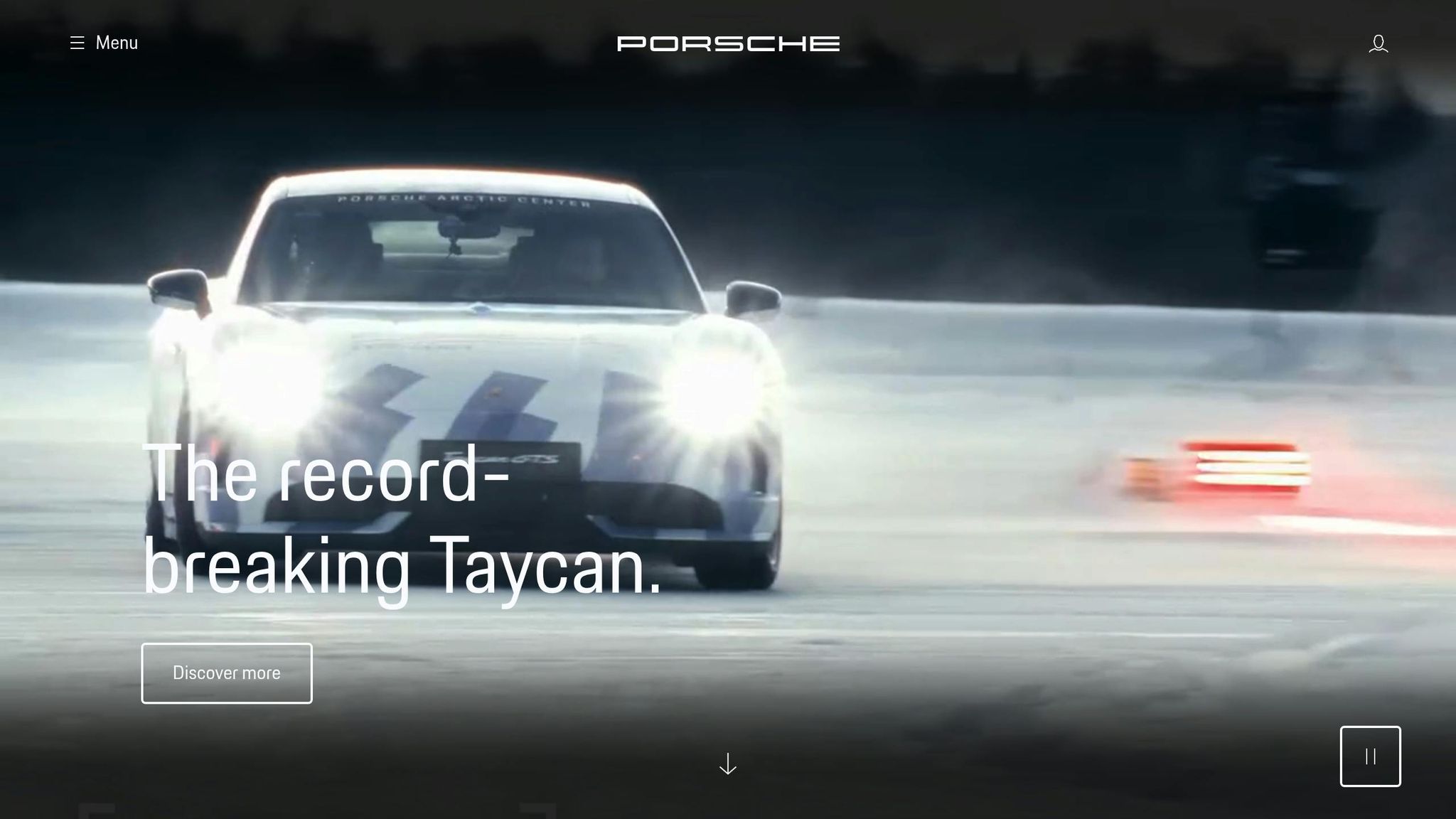
The Porsche 918 Spyder saw its value skyrocket, with prices climbing from £870,000 in May 2021 to £3.0 million for a Weissach model by December 2023.
Limited Production Numbers
With only 918 units meticulously hand-assembled, the rarity of the Porsche 918 Spyder plays a huge role in its rising value.
Impressive Performance Specs
Under the hood, it boasts a 4.6-litre V8 engine paired with two electric motors (115 kW and 95 kW). Together, this hybrid system delivers a combined 887 bhp and 1,275 Nm of torque. These figures translate into jaw-dropping performance: 0–100 km/h in just 2.6 seconds and a Nürburgring lap time of 6 minutes 57 seconds.
The Weissach Package
For those seeking even more exclusivity, the optional Weissach Package reduced the car’s weight by 41 kg using carbon-fibre components and lighter wheels. This package not only enhanced performance but also made the car even more appealing to collectors.
The Porsche 918 Spyder’s combination of cutting-edge hybrid technology and precision engineering mirrors the traits that drive up the value of other hypercars, like the LaFerrari. It also paved the way for the McLaren P1’s rise in prominence.
3. McLaren P1 (2013-2015)

The McLaren P1 quickly gained a reputation as a collector's dream, following the success of the Porsche 918.
Limited Production
With only 375 units ever made, the P1 was designed to be an exclusive marvel of engineering. It combined cutting-edge hybrid technology with the raw power expected from a supercar.
Hybrid Powertrain
The P1 is powered by a 3.8-litre twin-turbo V8 engine paired with an electric motor. Together, they deliver an impressive 903 hp and 980 Nm of torque, offering both high performance and hybrid efficiency.
Auction Results
The P1 has shown strong appreciation in value at auctions:
- Highest price: £1,940,000 (2015 model, 4 March 2023)
- Lowest price: £805,000 (2014 model, 9 March 2024)
- Average price: £1,350,000
4. Lamborghini Aventador SVJ (2018-2021)

The Lamborghini Aventador SVJ was the brand's answer to the hybrid hypercars of its time. Officially named the Aventador LP770-4 SVJ, this model is highly sought-after among modern supercar enthusiasts, thanks to its limited production run and advanced engineering. Lamborghini produced only 900 units of this track-focused version, also called SuperVeloce Jota.
Under the hood, it boasts a 6.5-litre naturally aspirated V12 engine delivering 760 hp, celebrated for its immediate throttle response. Power is sent to all four wheels through a seven-speed automatic gearbox. A standout feature is Lamborghini's 'ALA' active aerodynamics system, paired with extensive weight-reduction efforts, which enhances both road and track performance. Unlike its hybrid competitors, the SVJ sticks to a naturally aspirated V12, appealing to those who prefer a more traditional mechanical driving experience.
Prices on the secondary market highlight its desirability, ranging from £370,000 for a 2020 model to £770,000 for a 2019 example, with an average of £550,000. These figures emphasise the SVJ's strong value retention and place it firmly among the most collectible supercars, thanks to its rarity and engineering excellence.
5. Ford GT (2017–2022)
The second-generation Ford GT (2017–2022) shows how limited production and exclusive allocations can drive up value. Paying tribute to Ford's iconic 1966 Le Mans win, this model has become a collector's dream. Initially priced at £410,000 (or £495,000 with added options), a delivery-mile 2017 model fetched an astonishing £1.5 million at Mecum Auctions.
After securing a class victory at the 24 Hours of Le Mans, the modern GT reinforced its connection to the legendary GT40, which dominated Le Mans in the 1960s. This connection has made it even more desirable to collectors. The earlier first-generation GT (2005–2006), priced at £115,000–£135,000 when new, now sees auction prices regularly surpassing £245,000. Some early examples have even gone beyond £490,000.
Following this, the Aston Martin Valkyrie takes hypercar innovation to another level, combining extreme rarity with performance that has sent its value soaring.
6. Aston Martin Valkyrie (2021–Present)
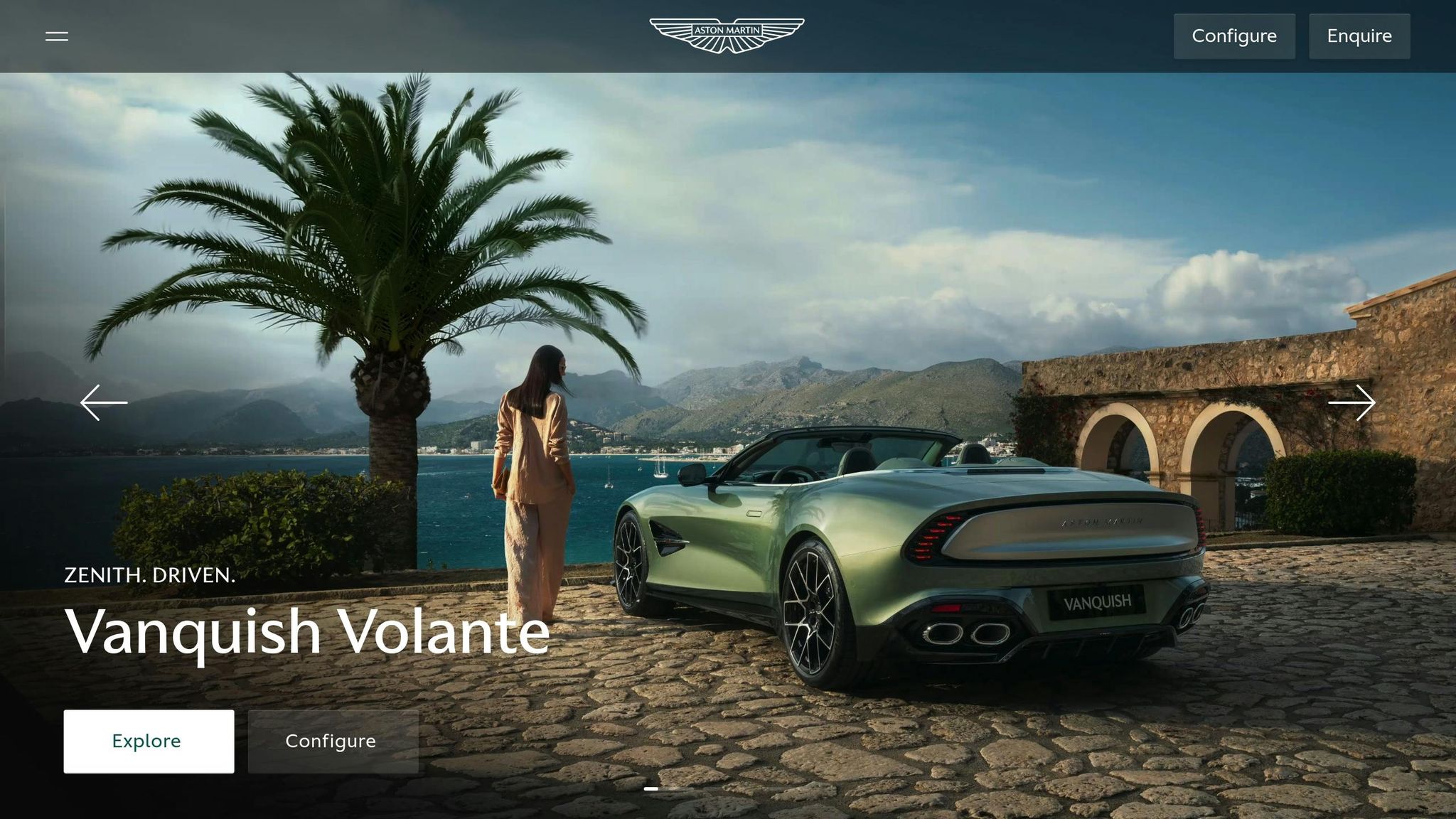
The Aston Martin Valkyrie, limited to just 150 road cars, represents the brand's first venture into the hypercar world. It combines advanced engineering with Formula One technology, bringing a race-inspired experience to the road.
At its heart is a naturally aspirated 6.5-litre Cosworth V12 engine paired with an electric motor. This hybrid system provides extra torque during take-off and achieves an impressive 1:1 power-to-weight ratio. The car's design focuses heavily on aerodynamics, featuring a flat underfloor for downforce, an all-carbon body, and active suspension for exceptional handling and speed.
With its Formula One heritage, advanced technology, and extreme rarity, the Valkyrie is not just a car but also a highly sought-after collector's piece.
7. Bugatti Chiron (2016–Present)

The Bugatti Chiron is a masterclass in hypercar design and exclusivity. Limited to just 500 units, every Chiron was sold and tailored to meet the exact preferences of its owner, with each car hand-built to perfection.
Powered by a quad-turbo 8.0-litre W16 engine, it delivers an astonishing 1,500 PS and 1,600 Nm of torque. This engineering marvel sprints from 0–100 km/h in a mere 2.4 seconds, with a top speed electronically capped at 420 km/h.
"In-keeping with the company's long tradition, the Chiron represents the best, most extraordinary vehicle in the world. In every respect, it must excel - not just fast, but beautifully designed, constructed from the finest materials, usable in all conditions and at all times, and comfortable during long journeys. This is what makes the hyper sports car truly unique", says Christophe Piochon, Chief Operating Officer of Bugatti Rimac and President of Bugatti Automobiles.
The Chiron's all-wheel-drive system ensures power is effectively distributed, while its carbon-fibre monocoque guarantees both rigidity and safety. A sophisticated cooling system with ten radiators keeps the car running optimally, even under extreme conditions.
Its active aerodynamics include an adjustable rear wing for enhanced downforce and braking. Inside, details like an aluminium console inlay and a 500 km/h speedometer highlight its meticulous craftsmanship.
This combination of rarity, performance, and attention to detail has made the Chiron a favourite among collectors and investors. While the original price was around £2.4 million, early models now fetch over £3.0 million.
For a deeper dive into valuations, check out the Price and Performance Data section covering all seven models.
Price and Performance Data
This table highlights the performance metrics and investment returns for selected models, with prices based on market transactions as of April 2025. Actual values may vary depending on the car's specification, mileage, and condition:
| Model | Key Performance Features | Investment Growth |
|---|---|---|
| Ferrari LaFerrari | 950 hp hybrid; 0-100 km/h in 2.4 seconds | 100% (£1.2M → £2.4M) |
| Porsche 918 Spyder | 887 hp; 0-100 km/h in 2.6 seconds | 245% (£870K → £3.0M) |
| McLaren P1 | 903 hp; 350 km/h top speed | 141% (£805K → £1.94M) |
| Lamborghini Aventador SVJ | 760 hp; ALA aerodynamic system | 108% (£370K → £770K) |
| Ford GT | 647 hp; Le Mans racing heritage | 266% (£410K → £1.5M) |
| Bugatti Chiron | 1,500 PS; 420 km/h speed cap | 25% (£2.4M → £3.0M) |
| Aston Martin Valkyrie | F1-inspired V12 engine; 1:1 power-to-weight ratio | Data pending |
UK Buyer Guide: Costs and Requirements
Here's a breakdown of what UK buyers should budget for and the key steps to meet legal and maintenance obligations.
Ownership Costs
| Expense Category | Annual Cost (£) | Details |
|---|---|---|
| Secure storage | ~3,000 | Climate-controlled facility |
| Security system | ~1,000 | Installation |
| Annual servicing | Up to 2,500 | Standard maintenance package |
| Fuel (3,000 miles) | ~1,500 | Based on efficiency under 15 mpg |
| Insurance | £3,000–£5,000 | Specialist high-performance cover |
Example: Ferrari service visits often exceed £1,500
Legal Requirements
To legally register and drive your supercar in the UK, ensure you have:
- A valid V5C vehicle registration certificate (log book)
- An up-to-date MOT certificate (for cars over three years old)
- Paid Vehicle Excise Duty (road tax)
- Comprehensive insurance cover
Maintenance & Preservation
To keep your supercar in top condition and protect its value:
- Choose models supported by UK dealerships.
- Verify the availability and cost of spare parts in the UK.
- Keep detailed service and ownership records.
- Install tracking systems and strong security measures.
- Limit annual mileage to around 3,000 miles.
- Use specialist insurers for high-performance vehicles.
The next section will cover steps to make the most of these appreciation trends.
Conclusion
In 2021, UK supercar registrations saw a 19% increase, reaching over 18,000 vehicles. This growth has been fuelled by limited production runs, advances in engineering, and the historical appeal of these cars.
Looking at the hypercars discussed earlier, three consistent factors drive their value: rare, limited-production models, exceptional engineering milestones, and vehicles that define an era.
For those considering investments in classic V12s or the latest EV hypercars, focusing on low-production models from well-established brands is key - especially those known for groundbreaking engineering or historical importance. To safeguard long-term value, it’s crucial to prioritise proper care, including climate-controlled storage, detailed maintenance, and thorough documentation.
The sustained interest in both classic and modern supercars, including the rise of EV hypercars, suggests strong potential for value growth in carefully selected models. As the automotive world continues to change, new opportunities will emerge for investors who can navigate this evolving market.


